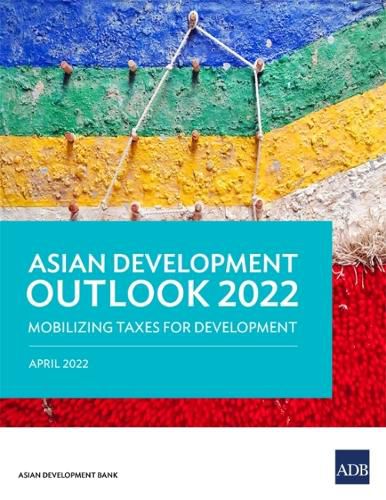Readings Newsletter
Become a Readings Member to make your shopping experience even easier.
Sign in or sign up for free!
You’re not far away from qualifying for FREE standard shipping within Australia
You’ve qualified for FREE standard shipping within Australia
The cart is loading…






This title is printed to order. This book may have been self-published. If so, we cannot guarantee the quality of the content. In the main most books will have gone through the editing process however some may not. We therefore suggest that you be aware of this before ordering this book. If in doubt check either the author or publisher’s details as we are unable to accept any returns unless they are faulty. Please contact us if you have any questions.
This report outlines economic prospects in developing Asia amid global turbulence and lingering pandemic risks. It discusses the implications of school closures and the invasion of Ukraine, and explores mobilizing taxes for development.
Developing Asia’s outlook remains positive, with growth of 5.2% expected in 2022 and 5.3% in 2023. Downside risks include spillover from geopolitical tensions, such as via higher-than-expected commodity prices. The Russian invasion of Ukraine has upended the global economic outlook and greatly amplified uncertainty for a world economy still contending with COVID-19. Aggressive monetary policy tightening in the United States could lead to financial instability. In the medium term, scarring from the pandemic poses significant risks, including learning losses from continued school closures that could worsen economic inequality.
The region’s economies urgently need to mobilize fiscal resources to restore the health of public finances and build a more inclusive and sustainable future. Opportunities to strengthen revenue will depend on specific circumstances, but more efficient value-added tax and better-optimized tax incentives hold promise for many economies. Strengthening personal income and property taxes can raise additional revenue and make tax systems more progressive. Significant opportunities exist to expand the use of tax and other fiscal instruments to tackle environmental and health priorities while raising revenue.
$9.00 standard shipping within Australia
FREE standard shipping within Australia for orders over $100.00
Express & International shipping calculated at checkout
Stock availability can be subject to change without notice. We recommend calling the shop or contacting our online team to check availability of low stock items. Please see our Shopping Online page for more details.
This title is printed to order. This book may have been self-published. If so, we cannot guarantee the quality of the content. In the main most books will have gone through the editing process however some may not. We therefore suggest that you be aware of this before ordering this book. If in doubt check either the author or publisher’s details as we are unable to accept any returns unless they are faulty. Please contact us if you have any questions.
This report outlines economic prospects in developing Asia amid global turbulence and lingering pandemic risks. It discusses the implications of school closures and the invasion of Ukraine, and explores mobilizing taxes for development.
Developing Asia’s outlook remains positive, with growth of 5.2% expected in 2022 and 5.3% in 2023. Downside risks include spillover from geopolitical tensions, such as via higher-than-expected commodity prices. The Russian invasion of Ukraine has upended the global economic outlook and greatly amplified uncertainty for a world economy still contending with COVID-19. Aggressive monetary policy tightening in the United States could lead to financial instability. In the medium term, scarring from the pandemic poses significant risks, including learning losses from continued school closures that could worsen economic inequality.
The region’s economies urgently need to mobilize fiscal resources to restore the health of public finances and build a more inclusive and sustainable future. Opportunities to strengthen revenue will depend on specific circumstances, but more efficient value-added tax and better-optimized tax incentives hold promise for many economies. Strengthening personal income and property taxes can raise additional revenue and make tax systems more progressive. Significant opportunities exist to expand the use of tax and other fiscal instruments to tackle environmental and health priorities while raising revenue.